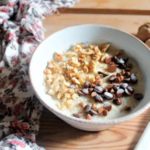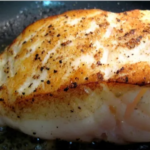The pestiños are typical Sevillian sweets, a great classic of Spanish confectionery. Generally, although they are made almost all year round, they are at their peak at Easter. However, each house has its typical traditional Andalusian recipe for pestiños, although sugar is not generally added inside the dough, which is why, when they finish frying, they are bathed with a honey syrup so that they take on all the flavor and typical sweetness of these Sevillian sweets. You should also know that the Cordovan pestiños are just as delicious.
In this article we explain how to make the best Sevillian pestiños. Do not miss this typical Easter sweet, some very rich old pestiños that keep very well for a long time. Let’s cook!
Ingredients to make Sevillian pestiños:
- 2 glasses of olive oil (and a little more for frying)
- 1 orange (its peel)
- 1 tablespoon matalauva (anise grain)
- 500 grams of common flour (and maybe something else)
- 1 tablespoon of sesame
- 1 tablespoon ground cinnamon
- 1 glass of white wine
- 1 glass of water
- 1 lemon (its peel)
- For the syrup:
- 250 grams of honey
- 1 small glass of water
How to make Sevillian pestiños:
- Are you wondering how to make homemade pestiños? To make the Sevillian pestiños recipe, you must first aromatize the olive oil.
- To do this, put the 2 glasses of olive oil in a frying pan, the finely peeled orange peel, you should not take the white part and the tablespoon of matalauva. Fry for 8-10 minutes over low heat so that it infuses well.
- Strain the oilto remove the matalauva and the orange peel, let it warm.
- When the oil has warmed up, place the flour in a volcano-shaped bowl and put the ground cinnamon, sesame, wine, water and 200 ml of oilin the center where you fried the orange peel and the matalauva.
- Reserve the excess oil for later. Next, mix with a wooden spoon and finish kneading with your hands.
- Trick: you may need to add more flour, these recipes usually use the “admitted” flour. There must be a smooth, homogeneous mass that does not stick to the hands, but remains soft.
- Take small portions of dough and make small balls. Next, with a small roller, stretch it long and very finely.
- Fold the two edges in towards the centerand press down a little so that they stick together.
- Put the excess oil flavored with the orange peel and the matalauva in a frying pan over the heat and then fry the grandmother’s pestiños.
- If you see that it is a small amount, add more olive oil.
- Next, peel the lemon trying not to catch the white part and put it in the oil. Put on the fire until it heats up well.
- When the oil is hot, remove the lemon skins and fry thehomemade pestiños over low heat. Do not put many at once and see that they are done well inside.
- Go removing the pestiños on a plate with absorbent paper to remove excess oil.
- Trick: if the dough has become fat, they can be raw inside. Ideally, they should be golden on both sides.
- Let the Sevillian pestiños cool completely. Next, make a honey bath, since the dough does not contain any type of sugar, so they will be sweet and rich.
- To do this, put the honey and water in a saucepan and heat over the heat. Then, turn off the heat and add the pestiños in small quantities.
- Let them rest for a little while in the honey syrup and turn them over and let them soak well. Go removing the grandmother’s Andalusian pestiños that are already bathed and adding others.
- Tip: if the syrup stays cold, heat it up again.
- You already have your Sevillian pestiños ready to eat. They last many days stored in a dry place, but they must be well covered.



